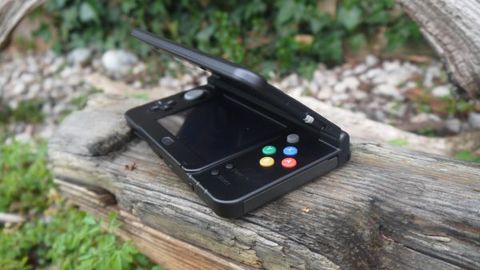Why you can trust TechRadar
If I'm ordering the new features in terms of importance, the next on the list is the tremendously better 3D effect. The 3DS of yesterday demanded you kept your head in a 'sweet spot' to get the benefit of an extra dimension - now the 3D follows you around.
Thanks to the console's new front-facing camera, the 3DS will follow your head and adjust the parallax to meet the angle of your focus. Much like when the 3DS and its stereoscopic function showed up in 2011, this new 3D feature is something you really have to see to understand. But I can tell you now, it makes a phenomenal difference; finally, I have a reason to push that 3D slider back up again.
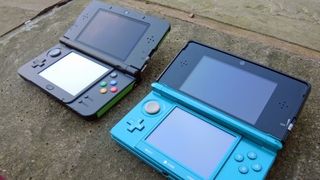
That said, there's still much debate over whether the 3D effect of Nintendo's handheld is more than a gimmick, and Nintendo hasn't done much of late to prove otherwise. Pokemon Sun and Moon, two of the biggest games to hit the 3DS, completely ignored the feature. The 2DS speaks for itself.
Nintendo's new head-tracking 3D doesn't make it better in clarity and pop, but it does make it more consistent and comfortable to use, which is still a big improvement in my eyes.
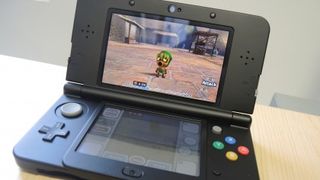
What might be less noticeable when you pick up the 3DS is the added speed. Nintendo has swapped out the CPU for a faster model. Apps now open and close with added brevity, and a number of upcoming games will only be compatible with this newer model.
Here's the rub of the New Nintendo 3DS. The Circle Pad Pro provides a (rather cumbersome) fix to anyone who wants to stick to their current model, but when it comes to new games that are New 3DS-compatible only, there's only one solution for those who don't upgrade: suck it up.
That's going to cause fragmentation, but obsolescence is the very driver of technology so it's difficult to criticise Nintendo's decision to up the processor on a device that's nearly four years old.
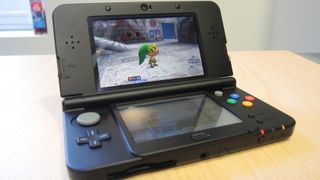
However, aside from some faster load times and better framerates, the improved processor doesn't offer too much of a benefit to your gaming experience. This is still a 3DS after all.
What's not been boosted significantly on the new model, however, is the New 3DS's camera. There's been a slight improvement for capturing pictures in low-light conditions, but overall it's a pretty weak feature that I'd say the console could do without were it not for augmented reality games like Face Raiders.

Nintendo made one other preparation for the future, NFC, and its gotten a lot of use over the years. The New 3DS comes with NFC built in to make use of Nintendo's army of Amiibo figurines. By placing an Amiibo on the bottom screen of the 3DS the two will interact, allowing you to level up your character, gain some bonus items, and more.
As for the games, I shouldn't need to tell you that they're in abundance. Good games too, which is where the technically superior PS Vita falls down.
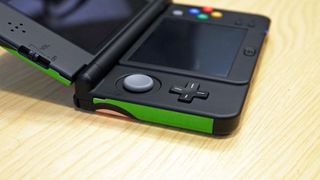
The library of games available to 3DS owners is already vast and varied but it's no coincidence that Nintendo is launched its new handhelds on the same day as Majora's Mask 3D, the handheld port of its classic N64 Zelda adventure.
But with the Nintendo Switch now on store shelves, we've definitely hit the handheld's twilight years, and it's unlikely that we'll see another major release for the console.
The bottom line on the 3DS's games library is that at this point you're buying the console for the games that are already out rather than for the games that are on their way in the future.
It's an impressive library to be sure, and you can check out the best it has to offer in our guide to the best 3DS games. Particular highlights include the excellent Super Mario Maker, Pokemon Sun and Moon, and The Legend of Zelda: A Link Between Worlds.
- Best Nintendo 3DS games: 20 fantastic titles you can take on the go
Hugh Langley is the ex-News Editor of TechRadar. He had written for many magazines and websites including Business Insider, The Telegraph, IGN, Gizmodo, Entrepreneur Magazine, WIRED (UK), TrustedReviews, Business Insider Australia, Business Insider India, Business Insider Singapore, Wareable, The Ambient and more.
Hugh is now a correspondent at Business Insider covering Google and Alphabet, and has the unfortunate distinction of accidentally linking the TechRadar homepage to a rival publication.

Researchers have used lasers on a material used in nuclear fuel to create a quasi-eternal data storage media — super-hard silicon carbide DVD-like discs could have a capacity of 677GB

Billions of Discord chats have been harvested, set to be sold online

Sign up for a Visible Wireless unlimited plan and pay just $275 a year - yes, really
